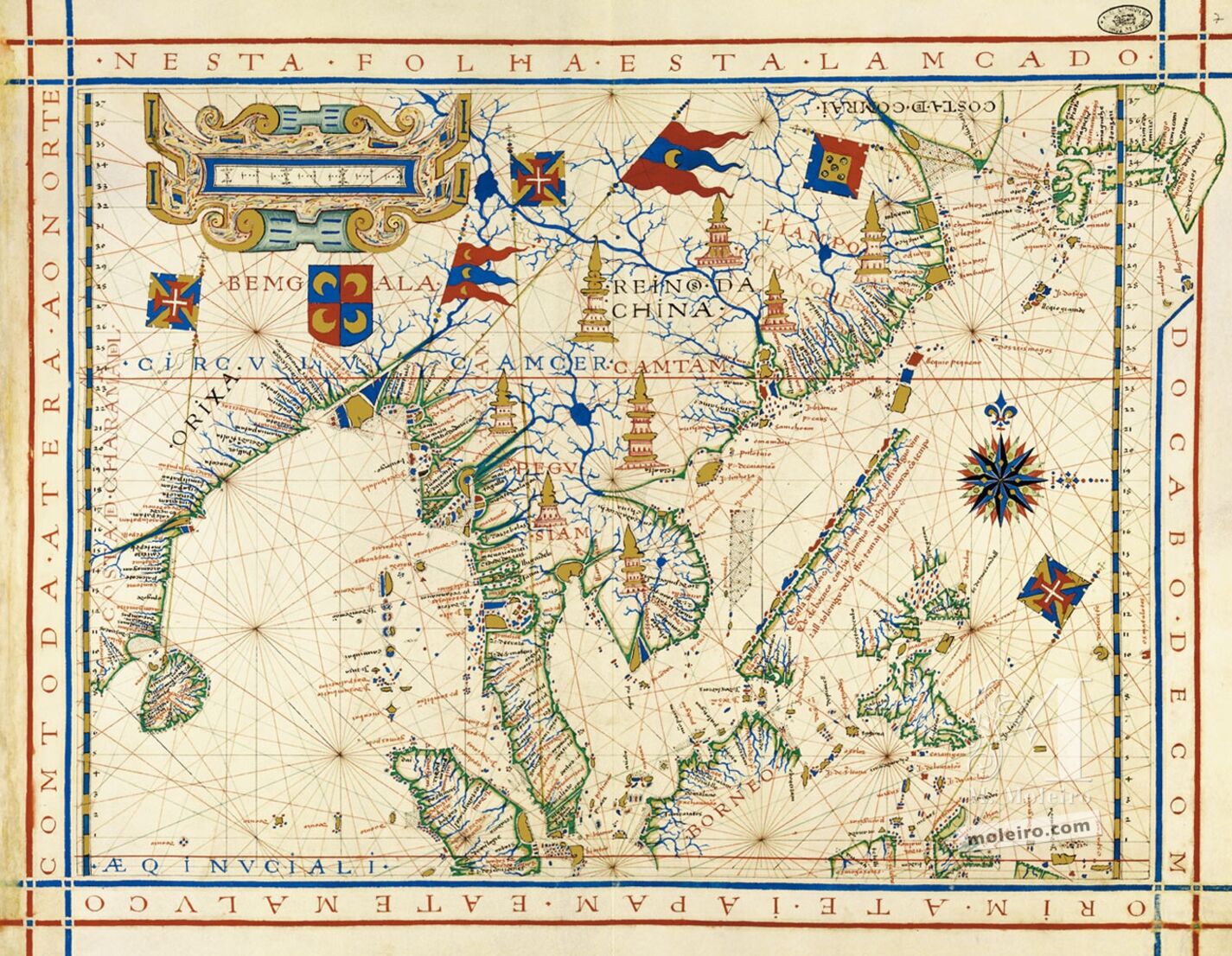Map No. 7. China, Japan and part of Southeast Asia
The space in the map, “based” on the Equator, extends from Ceylon to Japan and to the Moluccas, in other words up to the Tordesillas semi-meridian, which, even though it is not drawn, was substituted by the scale of latitudes, near the right margin of the folio. Thus, the map meticulously portrays the coasts (Malaysia, Indo-China, Borneo, China), the archipelagos and the numerous islands of the Eastern Indian Ocean and the South China and East China seas, as well as the entrance to the Pacific Ocean.
The location of points (ports and islands) which, when viewed together, show the configuration of the coasts was based on nautical itineraries and hence often have a rectilinear and sequential aspect. This also explains the lack of information about coasts that were peripheral to these itineraries, as is the case with the coasts of the Gulf of Thailand and the Gulf of Tonkin, and the better information about coasts that were commercially more attractive, such as the region between Canton and Shanghai. The Portuguese emporium of Macao, established during the 1550s, which ensured the link between the great maritime routes and Canton through the Pearl River, is shown for the first time in Vaz Dourado’s maps.
Four Portuguese flags are implanted in specific places and territories: Ceylon, Malacca, Japan and the Moluccas. In terms of Muslim power there is only a large shield with crescents dominating the Bay of Bengal; all of East Asia (China, Thailand, Indo-China) is illustrated, apart from the names of the main kingdoms, with eight large pagodas, which indicate another religion not yet mentioned in the atlas, i.e. Buddhism.
This is probably the most well-known folio in Vaz Dourado’s atlases, not just because it includes many of the geographic novelties of the Far East for Europeans but also due to its iconography and rich colours.
João Carlos Garcia
Faculdade de Letras, Universidade do Porto
(Fragment of the Universal Atlas of Fernão Vaz Dourado commentary volume)
